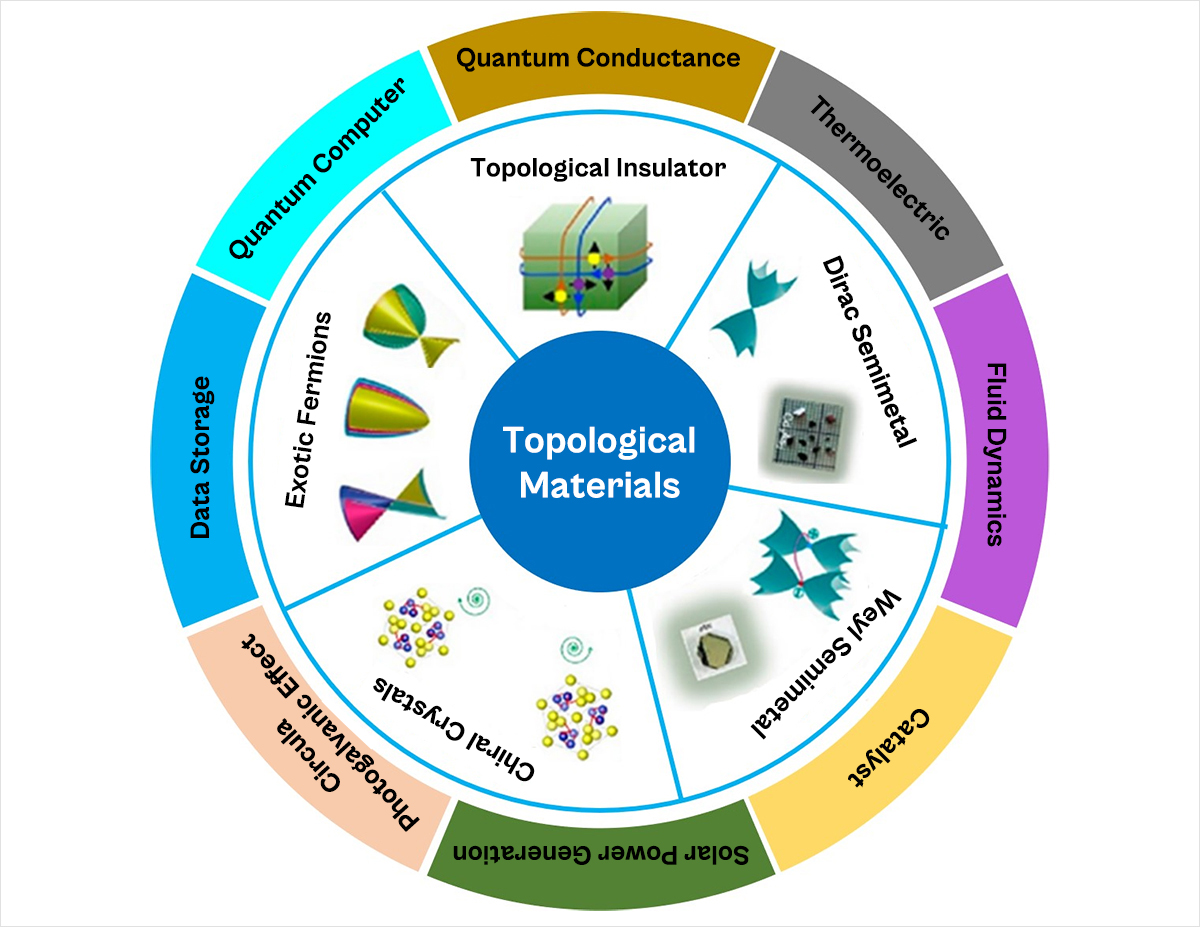News
Foundational Principle of Next-Generation Quantum Device Technology Identified for the First Time
2025-05-28 Research

Proven through experimental observation of the circular photogalvanic effect in 2D Weyl semimetals
The term phase denotes the essential characteristics of the shape of an object, abstracted from superficial variations in shape. For instance, eggs and soccer balls have different shapes, but they share the same phase as a round, smooth, and closed three-dimensional object without holes. A donut, on the other hand, has a hole in the center, making it an object with a different phase from eggs and soccer balls. The recognition that the concept of phase can also be applied to the electronic structure of matter gave rise to the new concept of topological matter. Along with Dirac semimetals, Weyl semimetals are one of the promising topological materials.
Weyl semimetals are a new class of metal in which electrons move ultrafast as if they have almost no mass and are extremely sensitive to the magnitude and orientation of external magnetic fields. These characteristics have positioned Weyl semimetals as a promising successor to graphene across a range of advanced applications such as precision magnetic field sensors, high-speed electronic devices, and nanoscale devices. In particular, they are emerging as key candidates for identifying the foundational operating principles of quantum devices, spurring intensive research efforts in the related fields.
One of the representative quantum phenomena of Weyl semimetals is the circular photogalvanic effect (CPGE), in which circularly polarized light induces a directional electric current in the material according to its helicity, the rotational direction of the incident light, without any external voltage input. Until now, this effect had been experimentally confirmed only in three-dimensional Weyl semimetals. A research team led by Kowhang Emeritus Professor Suk-Ho Choi of the Department of Applied Physics and Professor Sung Kim of Humanitas College has now demonstrated, for the first time in the world, the emergence of CPGE in two-dimensional Weyl systems. This marks the first experimental realization of a quantum phenomenon that had, until now, remained purely within the realm of theoretical prediction for planar materials.
Professor Choi’s research team precisely fabricated a thin phase semimetal film less than ten nanometers to implement a two-dimensional Weyl semimetal and analyzed the direction in which the current flows when illuminated by rotating light. As a result, they confirmed that CPGE, in which the direction of current changes depending on the direction of light, actually occurred in the two-dimensional Weyl system, and furthermore, the team also elucidated the underlying electronic structure and the physical mechanism responsible for the emergence of this effect in a planar geometry.

While bulky and thick three-dimensional structures have limited potential for miniaturization and integration, two-dimensional Weyl semimetals can implement complex quantum phenomena with atomically thin layers, just a single layer or a few nanometers in thickness, rendering them far more suitable as the platform for device miniaturization and system-level integration for next-generation electronic and optoelectronic applications. This is why this research is widely considered as a critical turning point, bridging a longstanding technological gap in the realization and practical deployment of two-dimensional semimetals.
The ability to control current flow by manipulating light helicity opens a practical pathway toward realizing core quantum principles underlying emerging quantum technologies, including next-generation quantum information processors and spin-based optoelectronic systems. Building upon this foundational achievement, the research team plans to develop a new class of nanoscale devices such as high-efficiency photoelectric converters to advanced energy transduction devices, and quantum information architectures, thereby translating a fundamental quantum response into functional device-level innovation.
This research was supported by the Mid-career Research Project of the Ministry of Science and ICT and the National Research Foundation of Korea. The study was conducted by Professors Suk-Ho Choi, Sung Kim, alongside Dr. Chan Wook Jang, and doctoral student Tae Jin Jeong, in collaboration with researchers from the University of Ulsan, the Australian National University, and the University of Wollongong. The findings were published in the May 2025 issue of the international academic journal Materials Today Physics (IF=10) under the title, “Circular photogalvanic effect in two-dimensional Weyl semimetals.”
-
News List
-
Highlight News
-
Info
- University Communication & Press
- +82-2-961-0106
- khsd3080@khu.ac.kr

